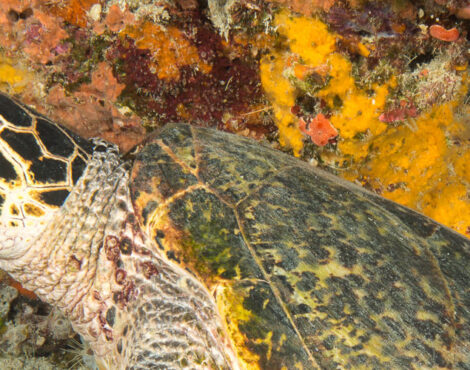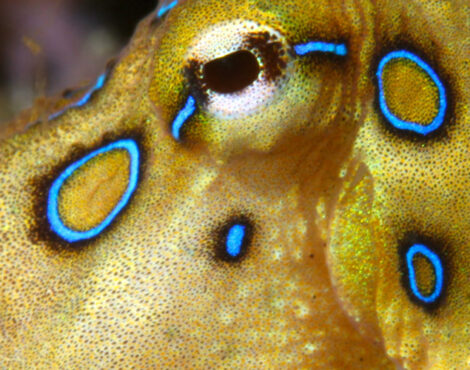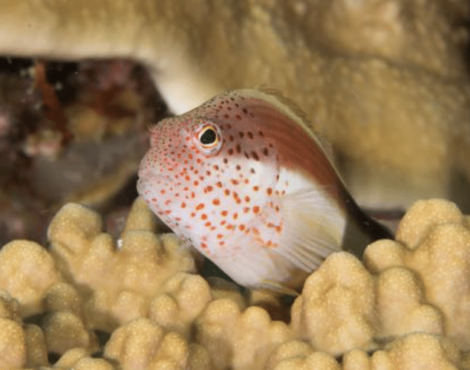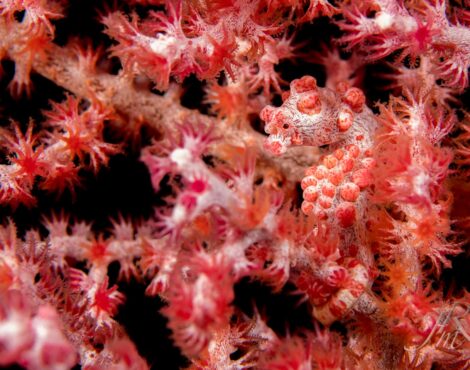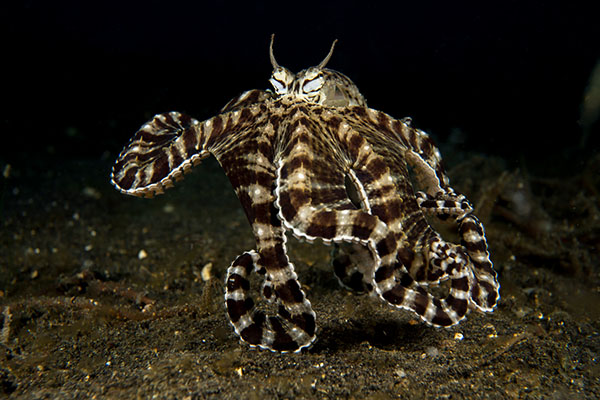
The reefs and sandy slopes throughout Bunaken Marine Park are home to some amazing animals with incredible survival strategies. From robust ghost pipefish that look like drifting blades of seagrass, to bobtail squid that can use moonlight to become almost invisible, this region has some of the most spectacular examples of defensive evolution in the world.
Most animals that rely on mimicry and camouflage can only copy one other species and hope that is enough to keep it alive, however there is one creature living in Bunaken Marine Park that can mimic as many as 15 different species, and we still have no idea how they can do it.
We are of course talking about the most intelligent invertebrate on the planet â the Mimic Octopus.
What is a Mimic Octopus?
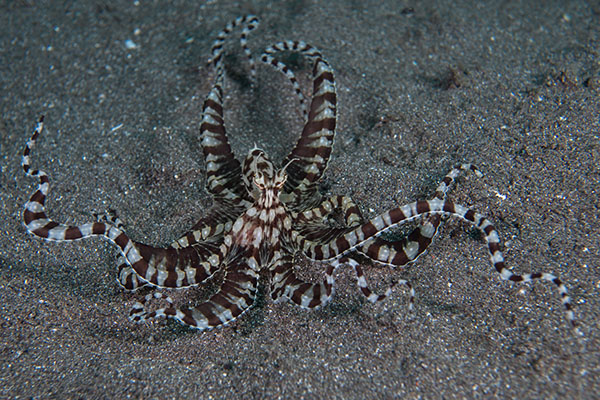
Scientifically named Thaumoctopus mimicus, the mimic octopus is a small to medium sized species of octopus that was originally discovered in 1998 right here in North Sulawesi, however it is now know to live throughout much of the Indo-Pacific.
They have all the classic features of any octopus, such as the ability to change colour, a lack of bones that allows them to fit through the smallest holes imaginable, and when under severe threat they can eject a cloud of black ink to confuse predators. They are however unique to other octopus in their mimicry behaviour, which we will talk more about later.
What Does a Mimic Octopus Look Like?
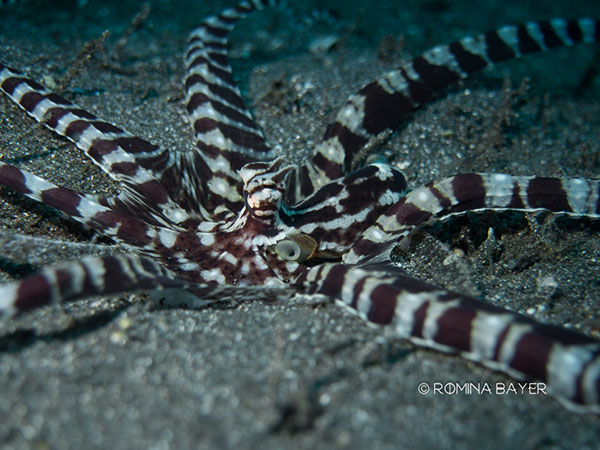
Mimic Octopusâ grow to a maximum length of around 60 cm including the body and arms, and their arms are typically no wider than a standard pencil. They also have characteristic âhornsâ protruding from each eye, which is often how our dive guides spot them.
The mimic octopusâ natural colour is light brown and beige, however just like other octopus species, this can be altered by manipulating their chromatophores â pigment containing and light reflecting cells found in the skin of most cephalopods which can be altered rapidly to alter the colour of the octopusâ skin. When they are spotted in the open, they tend to be in a defensive mode, and their colour is much more contrasting than it would be if it were resting.
Why âMimic Octopusâ?
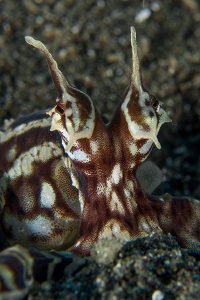 Cephalopods, especially octopus, are well known for their use of mimicry and camouflage to avoid predation, however the mimic octopus takes this to entirely new levels.
Cephalopods, especially octopus, are well known for their use of mimicry and camouflage to avoid predation, however the mimic octopus takes this to entirely new levels.
Not only can the mimic octopus alter its colouration and skin texture to blend in with its environment, it can also change the shape of its body and the way it moves in order to impersonate other marine creatures. It is known to impersonate as many as 15 different species, but as we still know very little about these fantastic critters, the actual tally could be much higher. Most of the time this mimicry is used for defence purposes, however they occasionally also use aggressive mimicry in order to trick their prey. Here are some of the more common or obvious creatures the mimic octopus can impersonate.
FlatfishÂ
When the mimic octopus wants to move over the dangerous and barren slopes, it usually does so by getting very close to the substrate, pulls all of its arms behind it, hurriedly gliding over the sea bed. By doing this, its shape very much resembles a flatfish.
It does not just become any flatfish though, it will alter its colouration to that of a banded sole â a particular species of flatfish that also just happens to be poisonous. Now our octopus resembles a toxic species of fish, it is free to swim in the open while it forages for food.
LionfishÂ
So what happens when a fish turns up who likes to eat banded sole?
The mimic octopus may suddenly swim up one or two metres above the seabed and spread its arms out. This may seem like a foolish mistake as now it is completely in the open, however the shape it takes on â which is aided by the rapid colour change â now remarkably resembles a common lionfish, and this look is reinforced by the way it swims.
Lionfish are closely related to scorpionfish, and as such, they are armed to the teeth with venomous spines. There are very few fish in the area that is brave enough to take on a lionfish, so once again, our mimic octopus friend can carry on as it was, although now it is swimming far above the seabed it can no longer feed.
Banded Sea KraitÂ
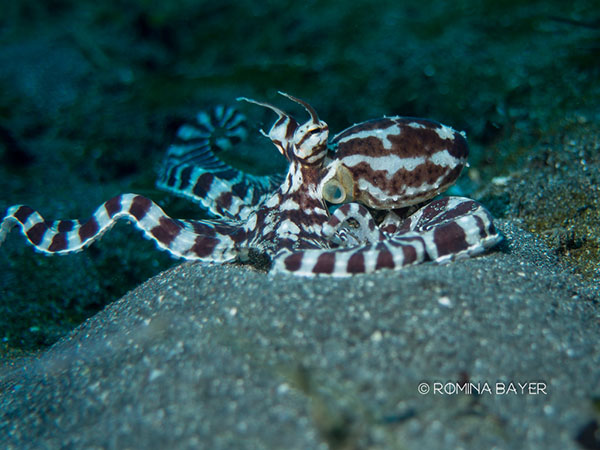
Although appearing like a lionfish may seem a safe bet, this is the ocean, and just about every animal living here here has its own predators it needs to worry about.
When the mimic octopus feels especially threatened, you would imagine it would do as all other octopus do â use their boneless body to squeeze into the nearest hole and wait until the danger has passed. That might seem like the logical and safest plan, but the mimic octopus has yet more tricks under its skirt.
Like other octopus, it will still dive into the nearest hole, however it will not entirely stay there. It will pull out two of its arms â which are now almost completely striped black and white â and undulate them to make any predators think it is a banded sea krait. These marine snakes just happen to be extremely venomous (one bite can easily kill a human), and while banded sea kraits do also have their own predators, nothing in this environment will ever dare to take one on. The sight of a krait is enough to make any potential predators scatter immediately.
Other MimicryÂ
These are the best known and most obvious animals that the mimic octopus can mimic, however it is also known to take the shape of jellyfish, crabs, string rays, and possibly even frogfish. We say possibly because when a group of divers or scientists see the same footage, they see different things. The only thing that is really important is that the foes of the mimic octopus believes it is something that it should really be avoiding.Â
What Does a Mimic Octopus Eat?Â
Like most other octopus species, the mimic octopus is both and hunter and a forager. It has been observed stalking small fish or invertebrates and catching them for food, however it is far more commonly spotted foraging rather than hunting.
They are also considered as carnivores as they are not known to eat any kind of plant or vegetation.  They forage for their food by swimming slowly over the sand and using their narrow arms to reach into any holes in the sand, or crevices in the reef, and by using their suction cups they can grab onto whatever small crustaceans or fish that might be hiding.
Because they are only found in shallow, murky waters, they are believed to live on a diet that consists entirely of small fish and crustaceans, as these are the animals that are most common in the âmuckyâ environments where mimic octopusâ call home.Â
Where Can I Dive with a Mimic Octopus?Â
Because mimic octopus can only be spotted over mucky slopes, you will need to head over to the North Sulawesi mainland for a spot of muck diving.
The muck diving close to Siladen is mostly a mixture between white sand and black sand, and the mimic octopus really do prefer pure black sand. We do have a couple of sites close the resort where they have been spotted in the past â such as Wori or Kampung Baru â however the majority of our sighting have been on our ever popular Manado Bay muck diving day trip â where we go to the other side of Manado and make three black sand muck dives.
They are tricky to find, and they move around the dive site a lot, so we can never make any sighting guarantees, however our guides know what they should be looking out for, and they will always try their hardest to show you what you want to see.
Â


